Most people think of cacti as desert warriors, tough and spiky, thriving in dry conditions. But epiphytic cacti flip the script! These rainforest dwellers love humidity, indirect light, and sometimes even bloom in dazzling nighttime displays. If you’re looking for exotic indoor greenery, here are fifteen species to consider.
Contents
- 1 Christmas Cactus (Schlumbergera × buckleyii)
- 2 Easter Cactus (Hatiora gaertneri)
- 3 Orchid Cactus (Epiphyllum oxypetalum)
- 4 Mistletoe Cactus (Rhipsalis baccifera)
- 5 Moonlight Cactus (Selenicereus grandiflorus)
- 6 Climbing Cactus (Selenicereus testudo)
- 7 Fishbone Cactus (Epiphyllum anguliger)
- 8 Rickrack Cactus (Epiphyllum chrysocardium)
- 9 Miniature Orchid Cactus (Epiphyllum pumilum)
- 10 Monkey Tail Cactus (Cleistocactus winteri subsp. colademononis)
- 11 Chain Rhipsalis (Rhipsalis paradoxa)
- 12 Elliptical Rhipsalis (Rhipsalis elliptica)
- 13 Coral Cactus (Rhipsalis cereuscula)
- 14 Cactus Fern (Rhipsalis campos-portoana)
- 15 Final Thoughts
Christmas Cactus (Schlumbergera × buckleyii)
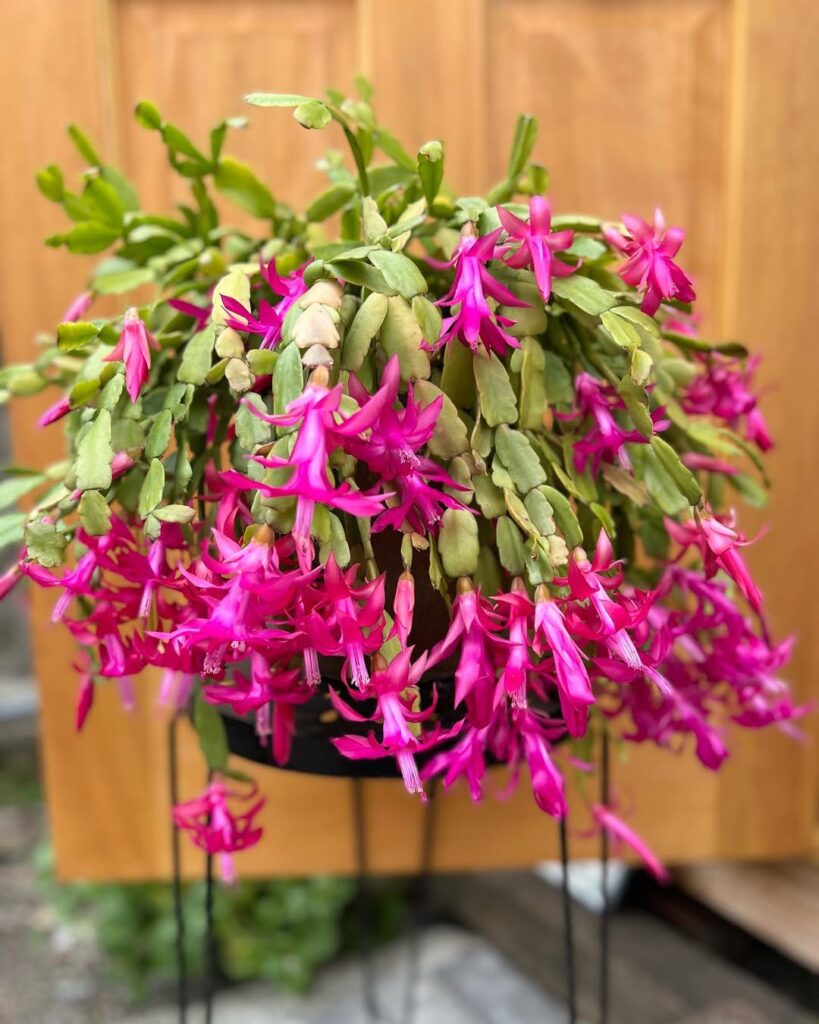
This classic holiday bloomer produces vivid red, pink, or white flowers in winter. It thrives in bright, indirect light with moderate watering—just don’t let it sit in soggy soil.
Easter Cactus (Hatiora gaertneri)

With star-shaped spring blooms, this cactus prefers well-draining soil, occasional watering, and indirect light.
Orchid Cactus (Epiphyllum oxypetalum)
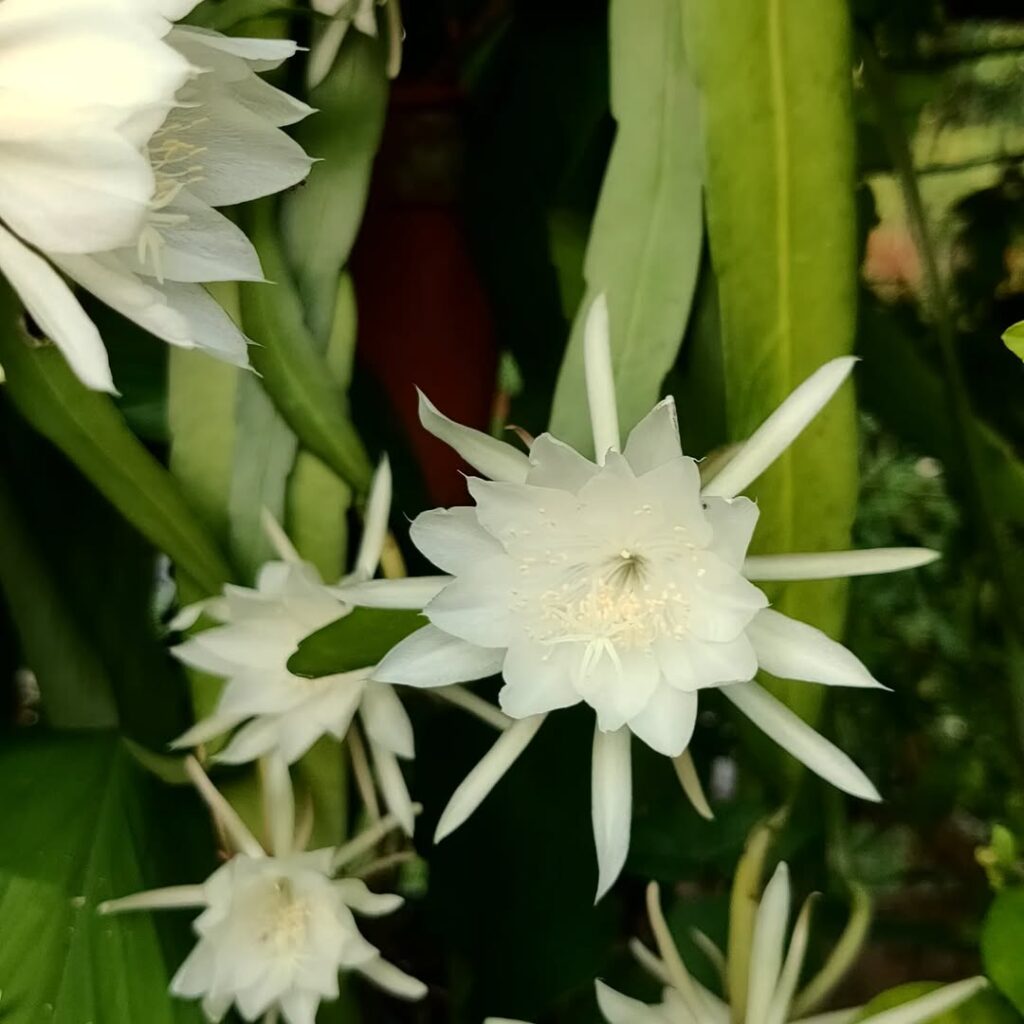
Its enormous flowers bloom at night with a gorgeous fragrance. Hang it in bright but indirect light and water when the soil dries out.
Mistletoe Cactus (Rhipsalis baccifera)
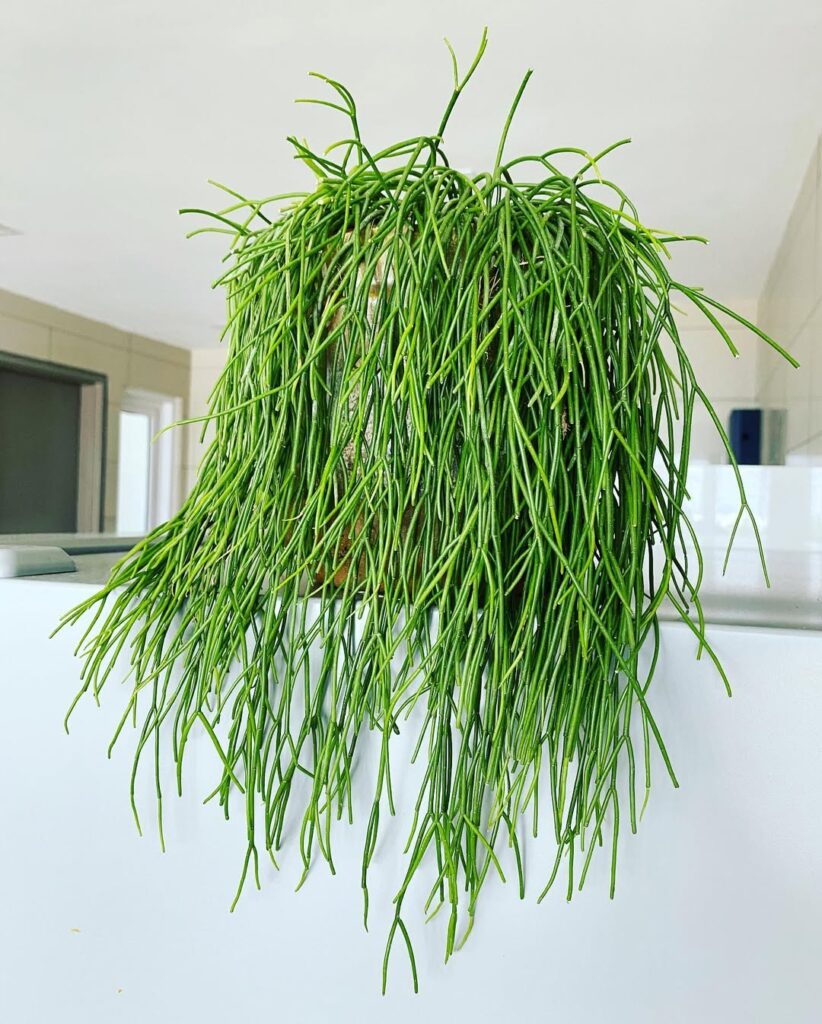
A cascading beauty with thin, trailing stems and tiny white berries. It tolerates low light and thrives in humidity.
Moonlight Cactus (Selenicereus grandiflorus)
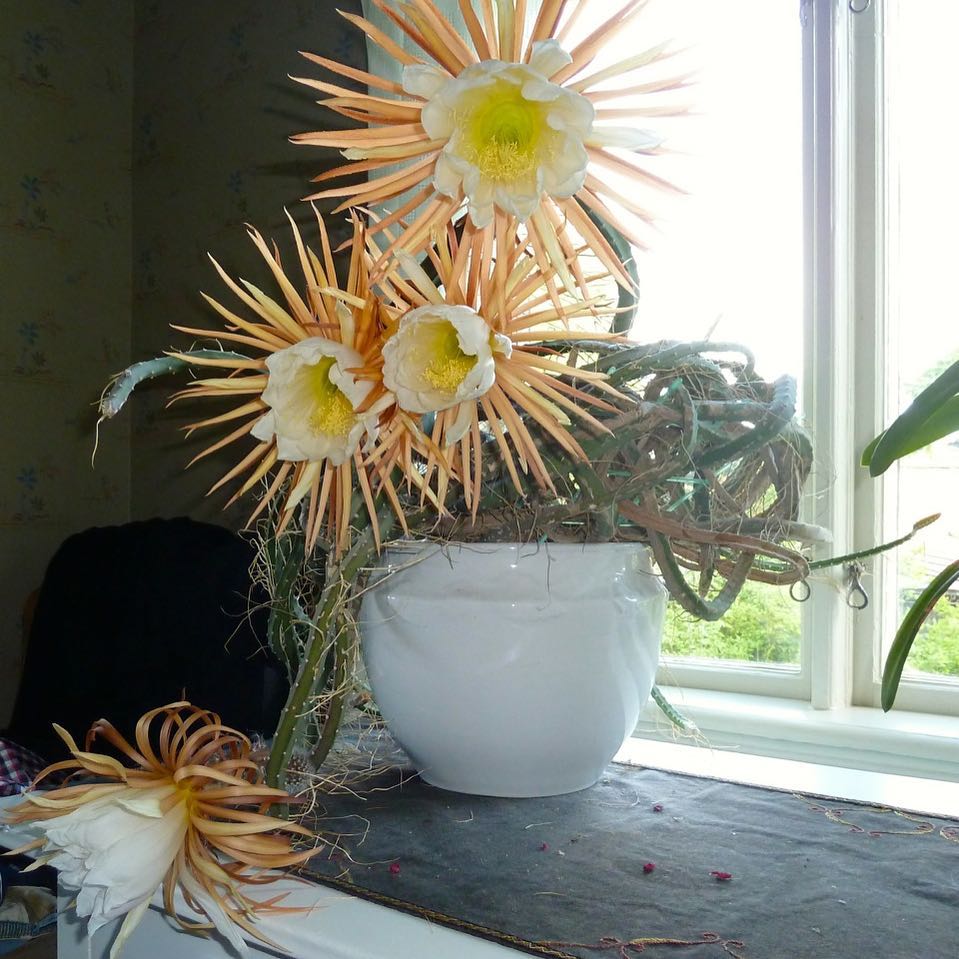
Large white flowers open only at night, giving it a mystical quality. Bright, indirect light and well-draining soil will keep it happy.
Climbing Cactus (Selenicereus testudo)
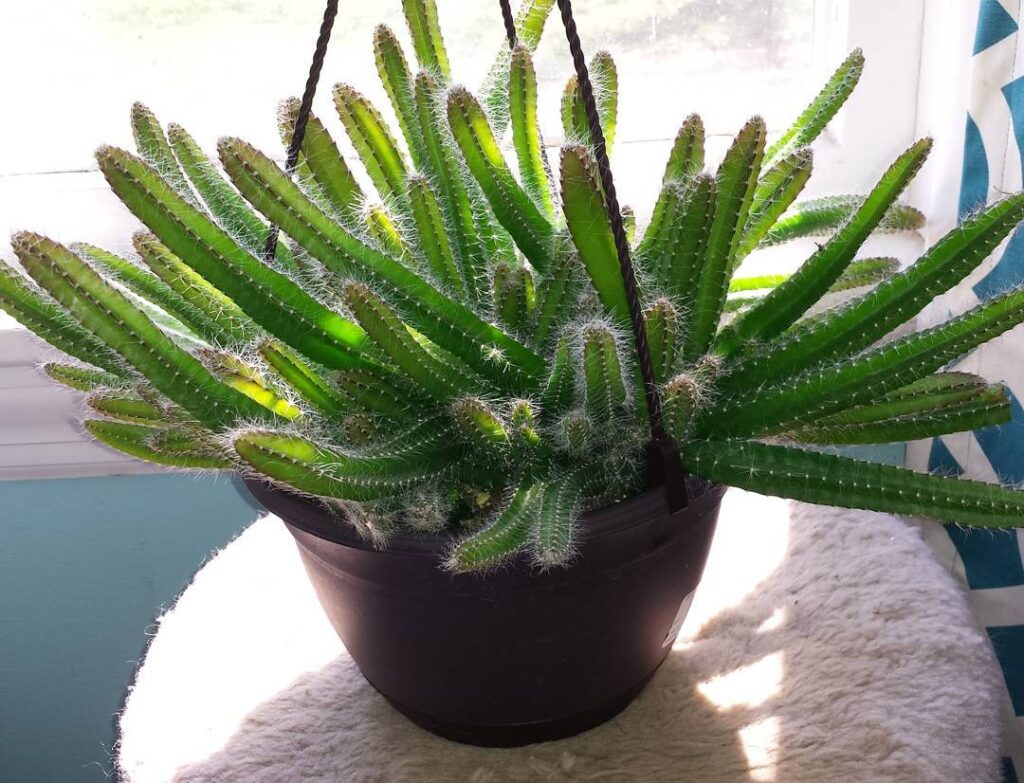
This vine-like cactus clings onto surfaces as it grows. It loves humidity and occasional deep watering.
Fishbone Cactus (Epiphyllum anguliger)
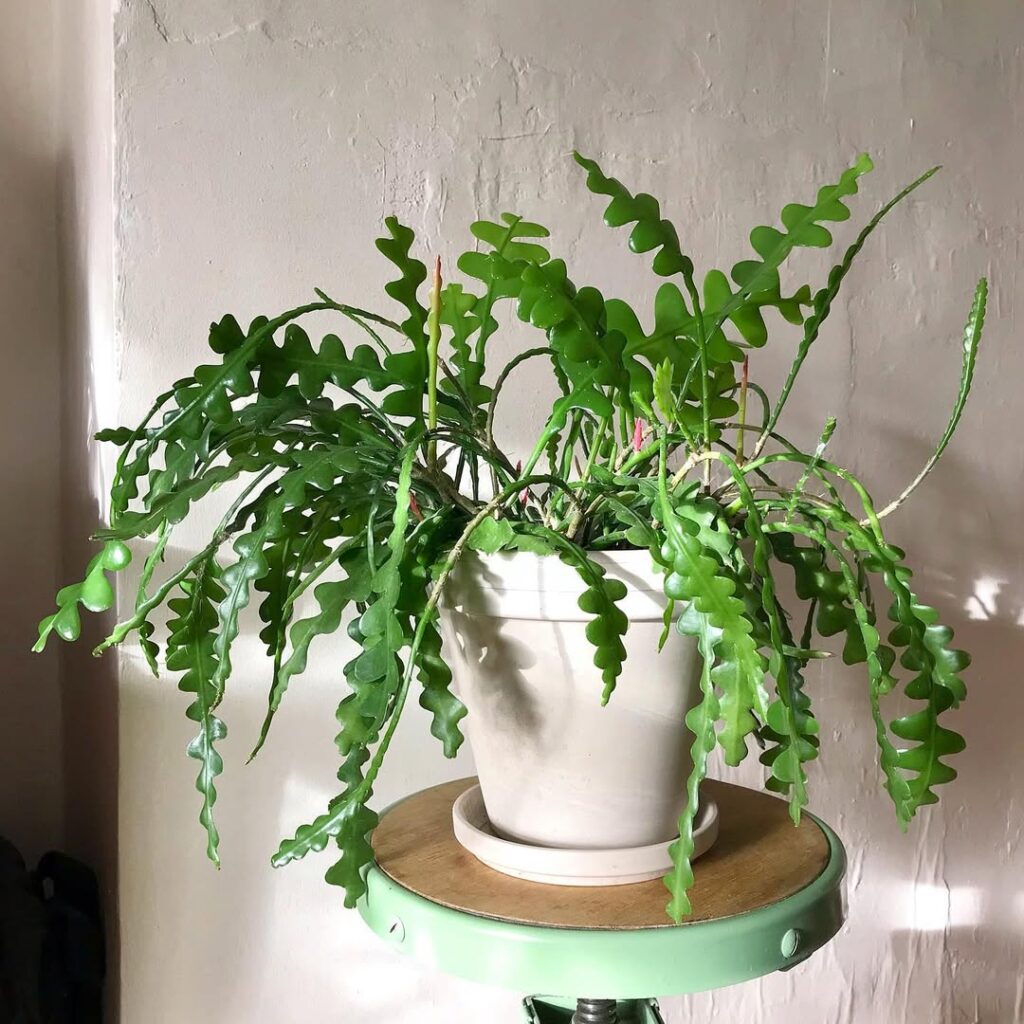
Known for its zigzag stems, this funky cactus thrives in bright, indirect light and enjoys humidity.
Rickrack Cactus (Epiphyllum chrysocardium)
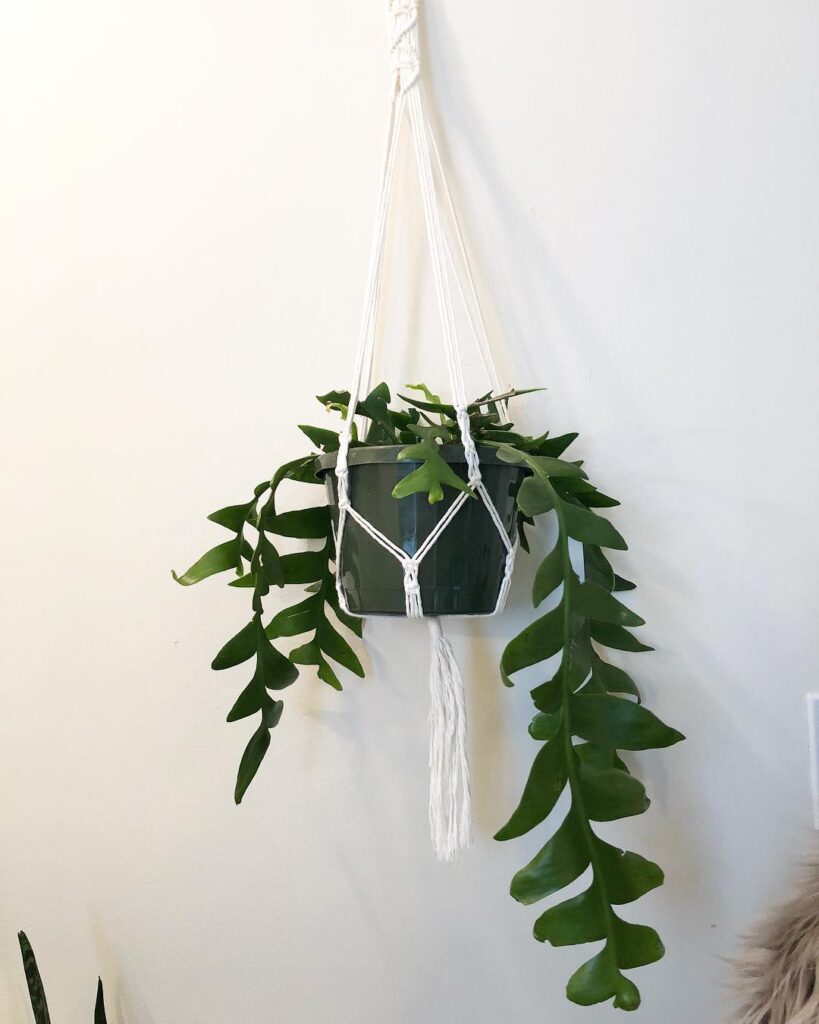
Similar to fishbone cactus, but with larger, wavy stems, it’s an eye-catching houseplant.
Miniature Orchid Cactus (Epiphyllum pumilum)

Despite its name, there’s nothing small about its stunning white blooms. This epiphytic cactus thrives in bright, indirect light and prefers well-draining soil. Its cascading stems make it perfect for hanging baskets, adding a graceful touch to indoor spaces.
Monkey Tail Cactus (Cleistocactus winteri subsp. colademononis)
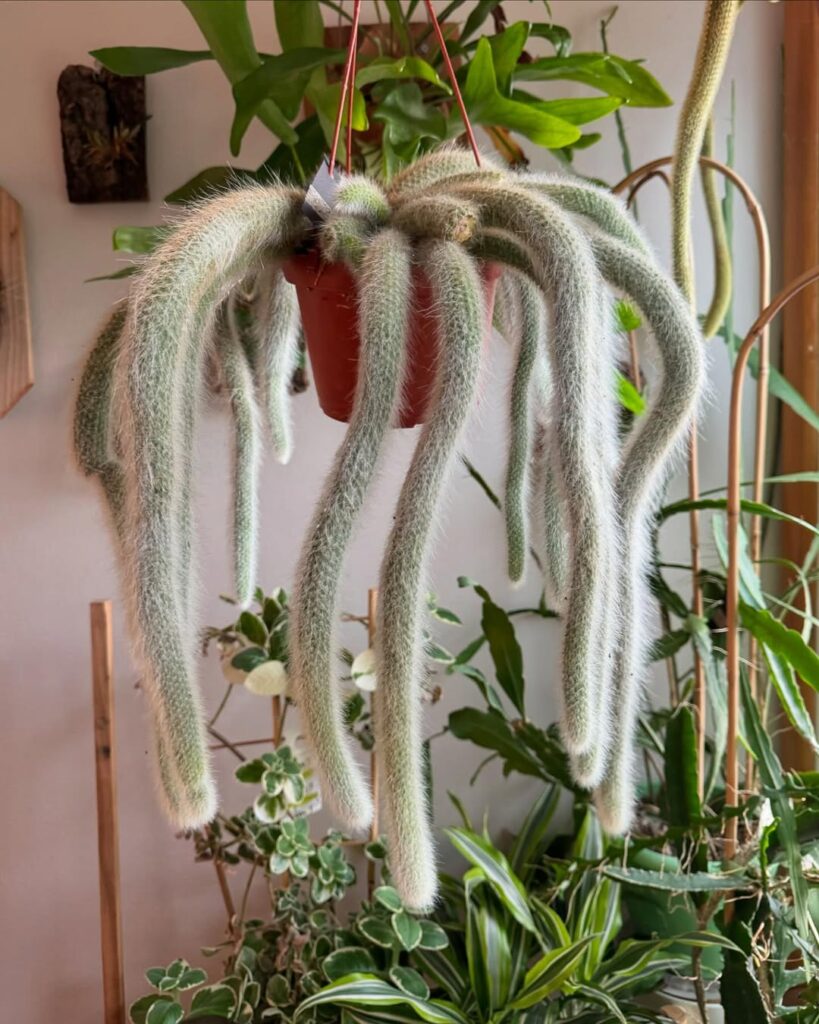
A trailing cactus with soft, fuzzy stems resembling a monkey’s tail. It enjoys bright but indirect light.
Chain Rhipsalis (Rhipsalis paradoxa)
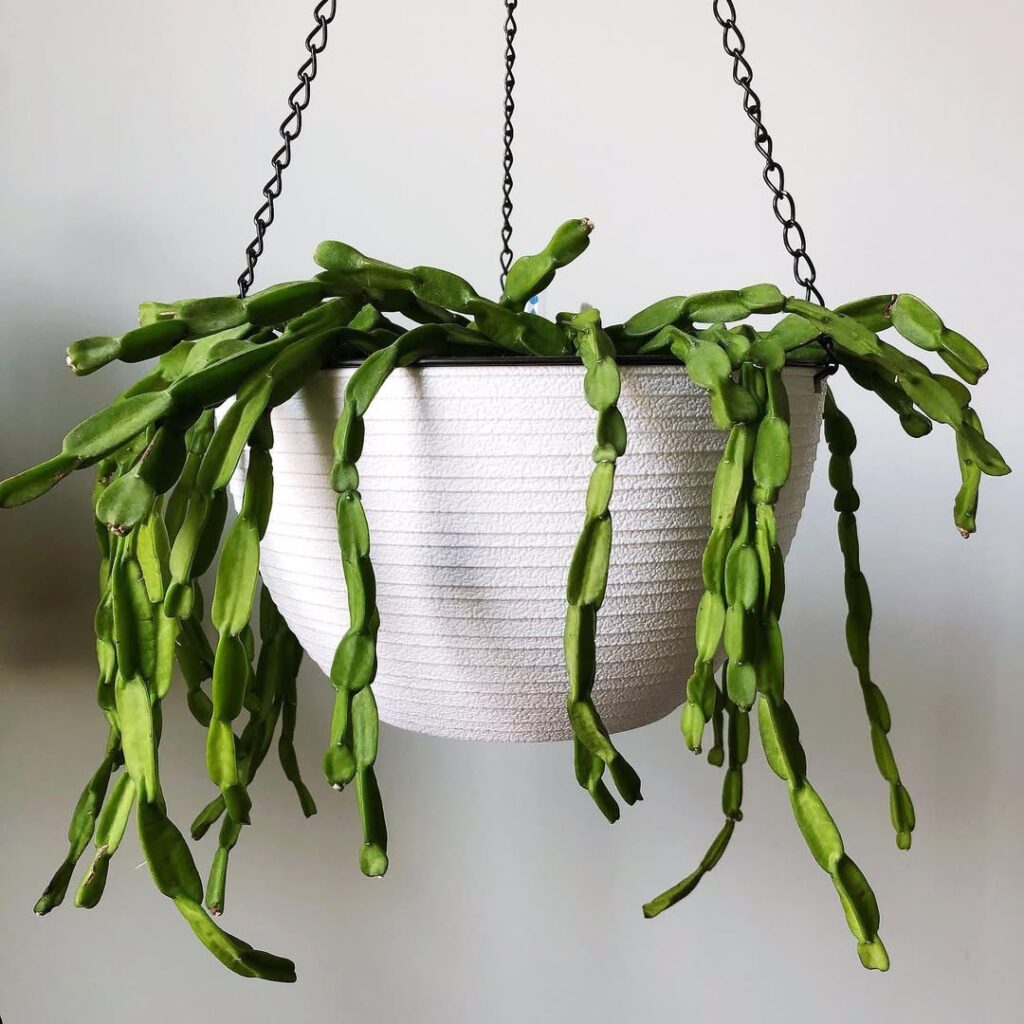
This unique trailing cactus has twisted, segmented stems that resemble linked chains. It thrives in moderate to low light, making it an excellent indoor plant. Unlike many cacti, it loves humidity, so occasional misting helps it stay happy.
Elliptical Rhipsalis (Rhipsalis elliptica)
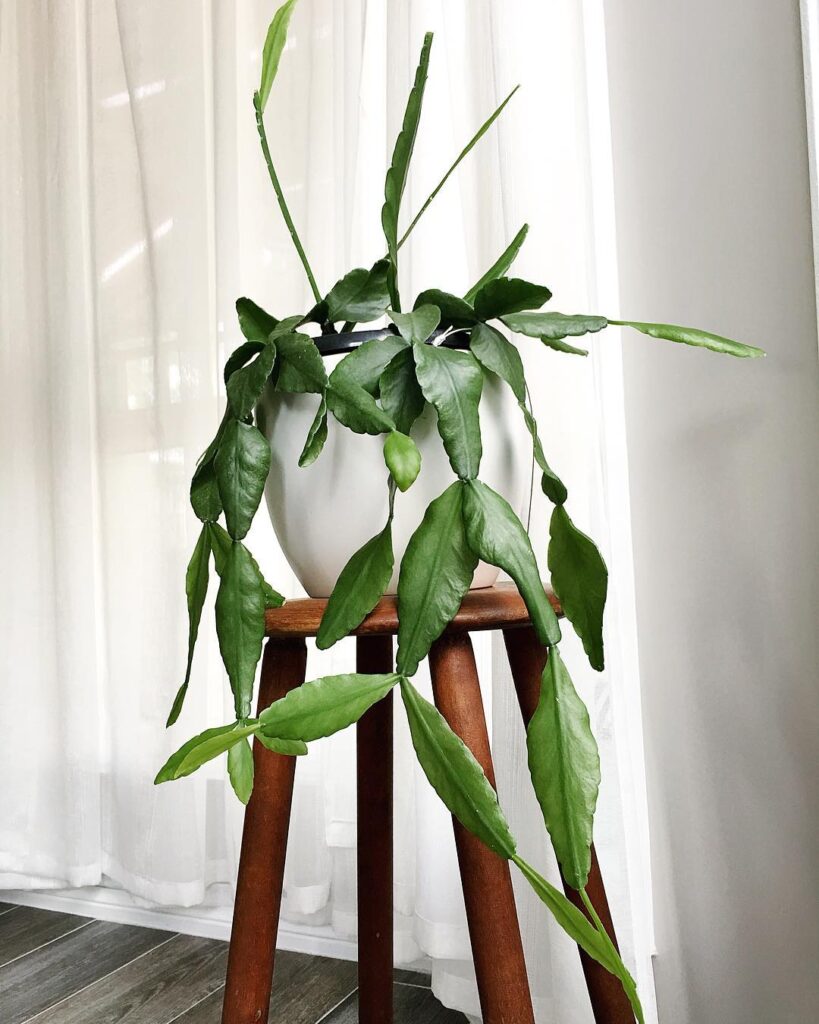
This epiphytic cactus has flat, segmented stems that drape elegantly, making it perfect for hanging baskets. It enjoys bright, indirect light but tolerates lower light conditions.
Coral Cactus (Rhipsalis cereuscula)
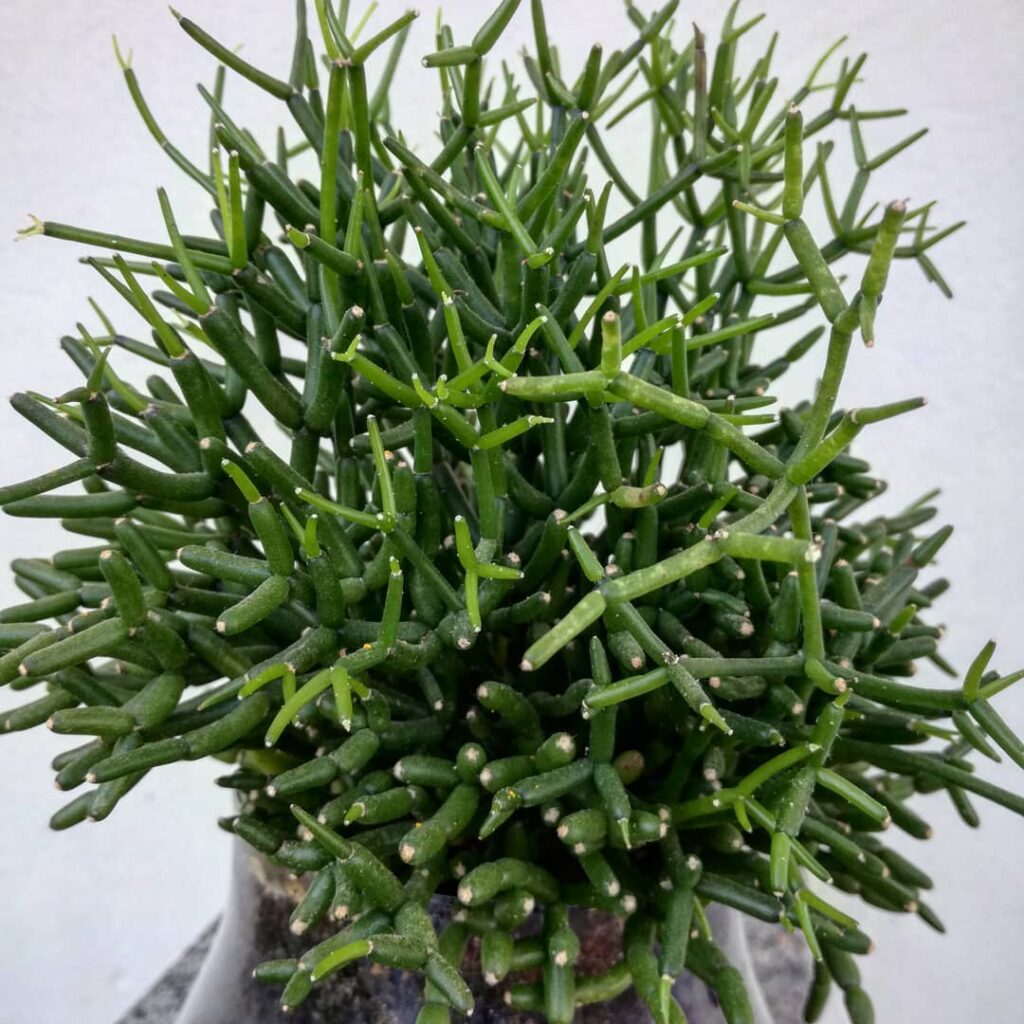
This low-maintenance, trailing cactus forms dense, coral-like clusters of thin stems, making it a charming addition to any indoor space. It thrives in bright, indirect light but tolerates lower light, enjoying humidity with occasional watering to keep its delicate stems lush.
Cactus Fern (Rhipsalis campos-portoana)
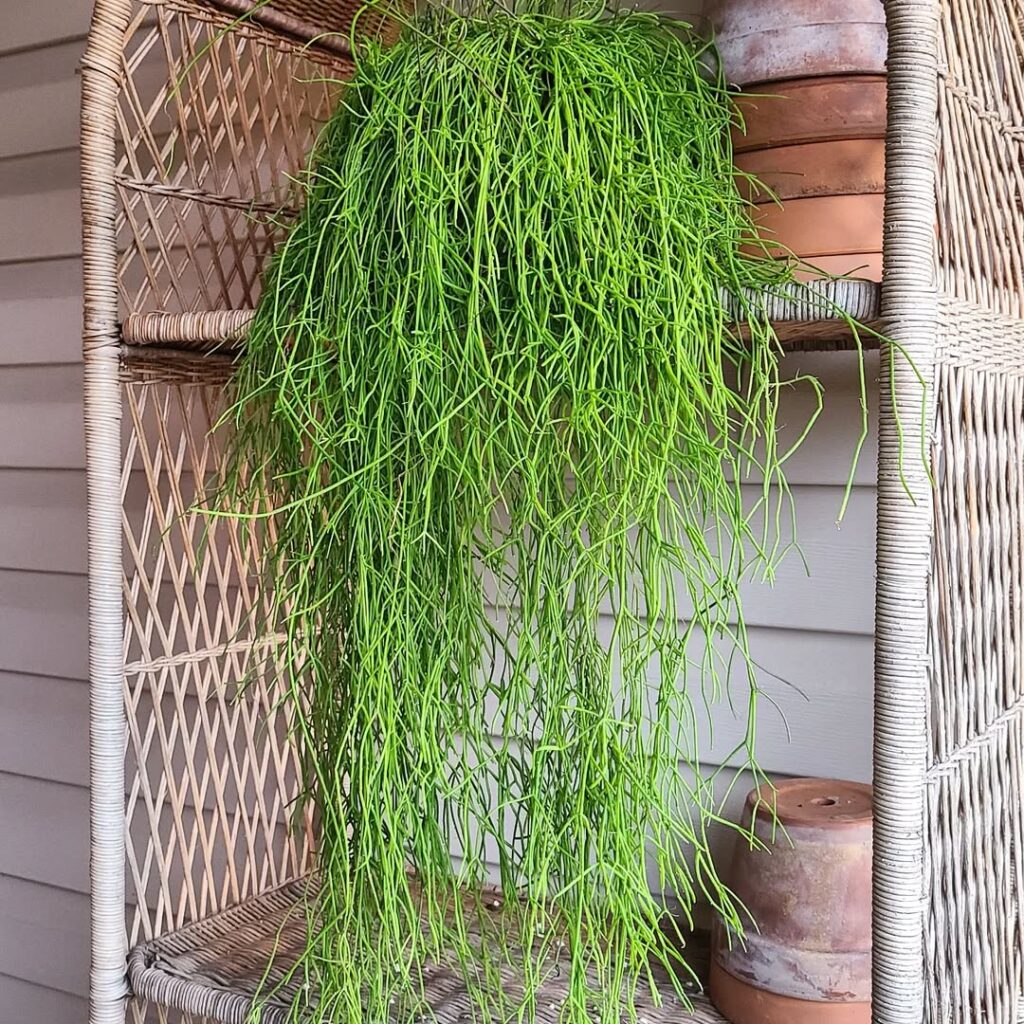
A delicate, cascading plant with thin, feathery stems. It enjoys moderate watering and humidity.
Final Thoughts
Epiphytic cacti challenge every cactus stereotype! They love humidity, shade, and a little extra care—but they reward you with gorgeous flowers and unique foliage. Whether you prefer a trailing beauty or a night-blooming spectacle, there’s an epiphytic cactus to liven up your indoor garden.
